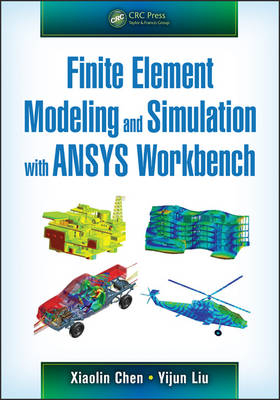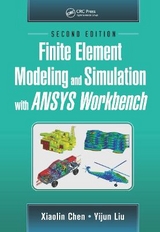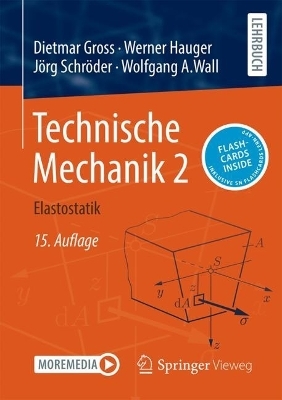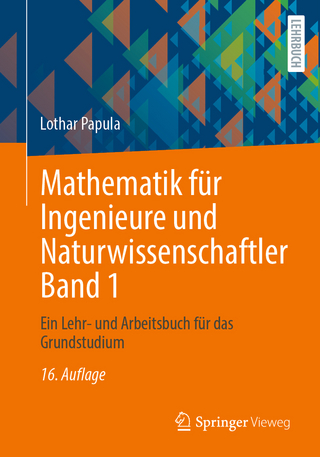
Finite Element Modeling and Simulation with ANSYS Workbench
Crc Press Inc (Verlag)
978-1-4398-7384-7 (ISBN)
- Titel erscheint in neuer Auflage
- Artikel merken
Finite Element Modeling and Simulation with ANSYS Workbench combines finite element theory with real-world practice. Providing an introduction to finite element modeling and analysis for those with no prior experience, and written by authors with a combined experience of 30 years teaching the subject, this text presents FEM formulations integrated with relevant hands-on applications using ANSYS Workbench for finite element analysis (FEA). Incorporating the basic theories of FEA and the use of ANSYS Workbench in the modeling and simulation of engineering problems, the book also establishes the FEM method as a powerful numerical tool in engineering design and analysis.
Include FEA in Your Design and Analysis of Structures Using ANSYS Workbench
The authors reveal the basic concepts in FEA using simple mechanics problems as examples, and provide a clear understanding of FEA principles, element behaviors, and solution procedures. They emphasize correct usage of FEA software, and techniques in FEA modeling and simulation. The material in the book discusses one-dimensional bar and beam elements, two-dimensional plane stress and plane strain elements, plate and shell elements, and three-dimensional solid elements in the analyses of structural stresses, vibrations and dynamics, thermal responses, fluid flows, optimizations, and failures. Contained in 12 chapters, the text introduces ANSYS Workbench through detailed examples and hands-on case studies, and includes homework problems and projects using ANSYS Workbench software that are provided at the end of each chapter.
Covers solid mechanics and thermal/fluid FEA
Contains ANSYS Workbench geometry input files for examples and case studies
Includes two chapters devoted to modeling and solution techniques, design optimization, fatigue, and buckling failure analysis
Provides modeling tips in case studies to provide readers an immediate opportunity to apply the skills they learn in a problem-solving context
Finite Element Modeling and Simulation with ANSYS Workbench benefits upper-level undergraduate students in all engineering disciplines, as well as researchers and practicing engineers who use the finite element method to analyze structures.
Dr. Xiaolin Chen is an associate professor of mechanical engineering and director of the computer-aided engineering (CAE) research laboratory at the Washington State University Vancouver. She received her BS in engineering mechanics from Shanghai Jiao Tong University, MS in mechanical design and theory from the State Key Laboratory of Mechanical System and Vibration affiliated with Shanghai Jiao Tong University, and her PhD in mechanical engineering from the University of Cincinnati. Her research interests include computational methods in solid mechanics, finite element analysis, boundary element analysis, reduced order modeling for dynamic systems, multiphysics phenomena and coupled-field problems, inverse problems, and regularization techniques. Dr. Yijun Liu is a professor of mechanical engineering at the University of Cincinnati. He obtained his BS and MS in aerospace engineering from Northwestern Polytechnical University (China), and his PhD in theoretical and applied mechanics from the University of Illinois at Urbana-Champaign. Prior to joining the faculty, he conducted postdoctoral research at the Center of Nondestructive Evaluation of Iowa State University and worked at Ford Motor Company as a CAE analyst. Dr. Liu’s interests are in computational mechanics, finite element method, boundary element method, and fast multipole method in modeling composite materials, fracture, fatigue, structural dynamics, and acoustics problems.
Introduction
Some Basic Concepts
An Example in FEA: Spring System
Overview of ANSYS Workbench
Summary
Problems
Bars and Trusses
Introduction
Review of the 1-D Elasticity Theory
Modeling of Trusses
Formulation of the Bar Element
Examples with Bar Elements
Case Study with ANSYS Workbench
Summary
Problems
Beams and Frames
Introduction
Review of the Beam Theory
Modeling of Beams and Frames
Formulation of the Beam Element
Examples with Beam Elements
Case Study with ANSYS Workbench
Summary
Problems
Two-Dimensional Elasticity
Introduction
Review of 2-D Elasticity Theory
Modeling of 2-D Elasticity Problems
Formulation of the Plane Stress/Strain Element
Case Study with ANSYS Workbench
Summary
Problems
Modeling and Solution Techniques
Introduction
Symmetry
Substructures (Superelements)
Equation Solving
Nature of Finite Element Solutions
Convergence of FEA Solutions
Adaptivity (h-, p-, and hp-Methods)
Case Study with ANSYS Workbench
Summary
Problems
Plate and Shell Analyses
Introduction
Review of Plate Theory
Modeling of Plates and Shells
Formulation of the Plate and Shell Elements
Case Studies with ANSYS Workbench
Summary
Problems
Three-Dimensional Elasticity
Introduction
Review of Theory of Elasticity
Modeling of 3-D Elastic Structures
Formulation of Solid Elements
Case Studies with ANSYS Workbench
Summary
Problems
Structural Vibration and Dynamics
Introduction
Review of Basic Equations
Formulation for Modal Analysis
Formulation for Frequency Response Analysis
Formulation for Transient Response Analysis
Modeling Examples
Case Studies with ANSYS Workbench
Summary
Problems
Thermal Analysis
Introduction
Review of Basic Equations
Modeling of Thermal Problems
Case Studies with ANSYS Workbench
Summary
Problems
Introduction to Fluid Analysis
Introduction
Review of Basic Equations
Modeling of Fluid Flow
Case Studies with ANSYS Workbench
Summary
Problems
Design Optimization
Introduction
Topology Optimization
Parametric Optimization
Design Space Exploration for Parametric Optimization
Case Studies with ANSYS Workbench
Summary
Problems
Failure Analysis
Introduction
Static Failure
Fatigue Failure
Buckling Failure
Case Studies with ANSYS Workbench
Summary
Problems
Appendix
Photo Credits
References
Index
| Zusatzinfo | 457 Equations; 8 Tables, black and white; 598 Illustrations, black and white |
|---|---|
| Verlagsort | Bosa Roca |
| Sprache | englisch |
| Maße | 178 x 254 mm |
| Gewicht | 900 g |
| Themenwelt | Mathematik / Informatik ► Mathematik ► Angewandte Mathematik |
| Naturwissenschaften ► Physik / Astronomie ► Mechanik | |
| Technik ► Bauwesen | |
| Technik ► Maschinenbau | |
| Technik ► Umwelttechnik / Biotechnologie | |
| ISBN-10 | 1-4398-7384-4 / 1439873844 |
| ISBN-13 | 978-1-4398-7384-7 / 9781439873847 |
| Zustand | Neuware |
| Informationen gemäß Produktsicherheitsverordnung (GPSR) | |
| Haben Sie eine Frage zum Produkt? |
aus dem Bereich



